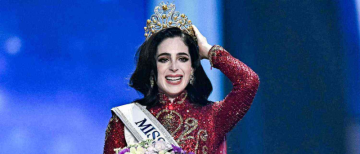The Digital Immersion of Gen Z
In 2025, the landscape of lust and desire has been radically transformed by the digital culture that defines Generation Z. This cohort, born between the late 1990s and early 2010s, is the first to come of age fully immersed in the internet, smartphones, and social media, and this immersion has fundamentally altered how they perceive, pursue, and express desire.

Unlike previous generations, for whom lust was largely rooted in physical proximity and traditional courtship rituals, Gen Z navigates a world where virtual connections, digital personas, and online communities are as real and meaningful as face-to-face encounters.
Virtual Connections and the Performance of Desire
The concept of lust for Gen Z is no longer confined to the physical; it is a fluid, multifaceted experience shaped by hyper-connectivity, the search for authenticity, and the interplay between public performance and private vulnerability. The omnipresence of technology means that desire is often mediated through screens—whether it’s the curated intimacy of a Snapchat streak, the fleeting thrill of a TikTok DM, or the anonymous allure of a Discord server.

Platforms like Instagram and TikTok have become stages for the “main character” phenomenon, where self-expression, validation, and the performance of desirability are inextricably linked, and the line between authentic longing and performative lust is often blurred.
Emotional Intimacy and Mental Health
Gen Z’s relationship with desire is also deeply intertwined with mental health; with unprecedented rates of anxiety, depression, and loneliness, this generation seeks emotional intimacy and self-care as much as physical connection.

Therapy, candid conversations about mental health, and the normalization of vulnerability have made emotional safety a prerequisite for desire, with many young people prioritizing partners who can offer empathy, understanding, and psychological support.
Privacy, Anonymity, and the Curation of Intimacy
At the same time, Gen Z’s desire is marked by a heightened awareness of privacy and the risks of digital exposure. Unlike Millennials, who often overshared online, Gen Z prefers closed groups, ephemeral content, and anonymous platforms, curating their digital footprints with care and sharing their most intimate thoughts only within trusted circles.

This cautious approach extends to their exploration of sexuality and identity, which is characterized by fluidity, inclusivity, and a rejection of rigid labels.
Fluidity, Inclusivity, and Identity Exploration
For Gen Z, desire is not about fitting into predefined categories, but about personal discovery and the freedom to experiment—whether that means exploring new pronouns, engaging with AI-driven influencers, or forming connections based on shared interests in fandoms, gaming, or activism. The rise of artificial intelligence and algorithm-driven content has further complicated the landscape of lust, offering personalized experiences that can both satisfy and manipulate desire.

AI chatbots and digital companions provide safe spaces for flirtation and self-exploration, while algorithms curate feeds that reinforce existing preferences and sometimes create echo chambers of desire.
The Paradox of Hyper-Connection and Loneliness
This technological mediation of lust brings both opportunities and challenges: on one hand, it allows for unprecedented personalization and inclusivity; on the other, it can lead to overstimulation, short attention spans, and unrealistic expectations. The paradox of Gen Z’s digital desire is that, despite being the most connected generation in history, they also report high levels of loneliness and isolation.

The constant bombardment of stimuli, the pressure to perform, and the difficulty of distinguishing between genuine connection and superficial interaction can make it harder to build deep, lasting relationships.
Redefining Desire for the Future
Yet, in response, Gen Z is forging new models of intimacy that prioritize emotional safety, mutual respect, and shared values over traditional markers of attraction. They are redefining what it means to be desirable—not just in terms of physical appearance, but in terms of authenticity, empathy, and the ability to connect across boundaries of gender, sexuality, and culture. Looking ahead, the future of lust will be shaped by the continued convergence of virtual and physical worlds, the growing importance of emotional intimacy, and the evolving role of technology as both mediator and mirror of desire.

For Gen Z, lust in 2025 is not just about longing for another person; it is about the desire to be seen, understood, and accepted in a world that is at once more open and more fragmented than ever before. As they navigate this complex terrain, Gen Z is not only redefining desire for themselves, but also setting the stage for how future generations will experience, express, and understand the most intimate aspects of human connection.
With inputs from agencies
Image Source: Multiple agencies
© Copyright 2025. All Rights Reserved Powered by Vygr Media.























